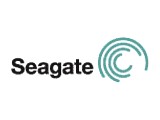Seagate's Record: 421 Gbits/sq.in.
 2006 is the 50th anniversary year of the hard disk drive. Seagate celebrated that with the announcement of a new world record.
2006 is the 50th anniversary year of the hard disk drive. Seagate celebrated that with the announcement of a new world record. Seagate could pack 421 Gigabits per square inch onto magnetic media, dramatically increasing storage capacities for magnetic drives. Using perpendicular recording technology, the company demonstrated this new storage feat using production equipment that is currently available.
This new technology is expected to substantially improve drive capacity. The 1-and 1.8-inch consumer electronics drives could be blown out to 40GB and 275GB, 500GB for 2.5-inch notebook drives, and nearly 2.5TB for 3.5-inch desktop and enterprise class drives. Seagate says that at 2.5TB, a hard drive would be capable of storing 41,650 hours of music, 800,000 digital photographs, 4,000 hours of digital video or 1,250 video games. It anticipates that solutions at these density levels could begin to emerge in 2009.
The areal density of 421 Gbpsi was demonstrated using 10 E-3 off-track bit error rate criteria with 5 per cent squeeze and meeting a 10 per cent off-track capability at a data rate of 735 megabits per second. The track density was 275,000 tracks per inch, and the linear density was 1.53 million bits per inch for a bit aspect ratio of 5.6. The demonstration was conducted using a product channel, perpendicular head and thermally stable media created with current production equipment.
Seagate says using new recording technology, its researchers have estimated that magnetic recording capacities should reach or exceed 50 terabits per square inch. So, the current record may not have to stand for long ....
Labels: Hard drive, Seagate



